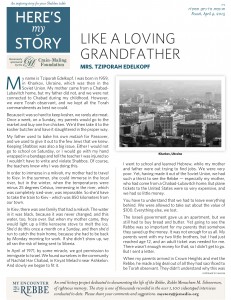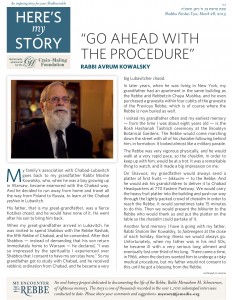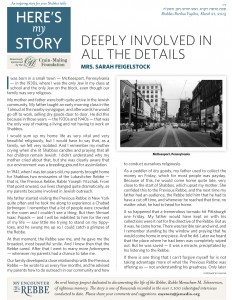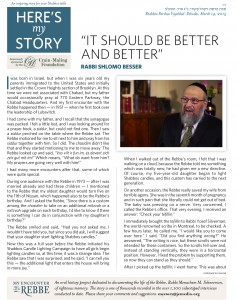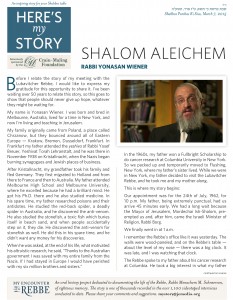HMS: Like a loving grandfather
My name is Tziporah Edelkopf. I was born in 1959, in Kharkov, Ukraine, which was then in the Soviet Union. My mother came from a Chabad-Lubavitch home, but my father did not, and we were not connected to Chabad during my childhood. However, we were Torah observant, and we kept all the Torah commandments as best we could.
Because it was so hard to keep kosher, we rarely ate meat. Once a week, on a Sunday, my parents would go to the market and buy one live chicken. We’d then take it to the kosher butcher and have it slaughtered in the proper way.
My father used to bake his own matzah for Passover, and we used to give it out to the few Jews that we knew. Keeping Shabbos was also a big issue. Either I would not go to school on Saturday, or I would go with my hand wrapped in a bandage and tell the teacher I was injured so I wouldn’t have to write and violate Shabbos. Of course, the teachers knew why I was doing this.
In order to immerse in a mikvah, as a Jewish woman must once a month, my mother had to travel to Kiev. In the summer, she could immerse in the local river, but in the winter, when the temperatures were minus 25 degrees Celsius, immersing in the river, which was completely iced-over was impossible. Then, she’d have to take the train to Kiev – which was 850 kilometers from our town – just to use the kosher mikvah.
In Kiev, there was one family that had a mikvah. The water in it was black, because it was never changed, and this water, too, froze over. But when my mother came, they would light up a little kerosene stove to melt the ice. She’d do this once a month on a Sunday, and then she’d run to catch the train home, because she had to be back by Monday morning for work. If she didn’t show up, we all ran the risk of being sent to Siberia. (more…)


